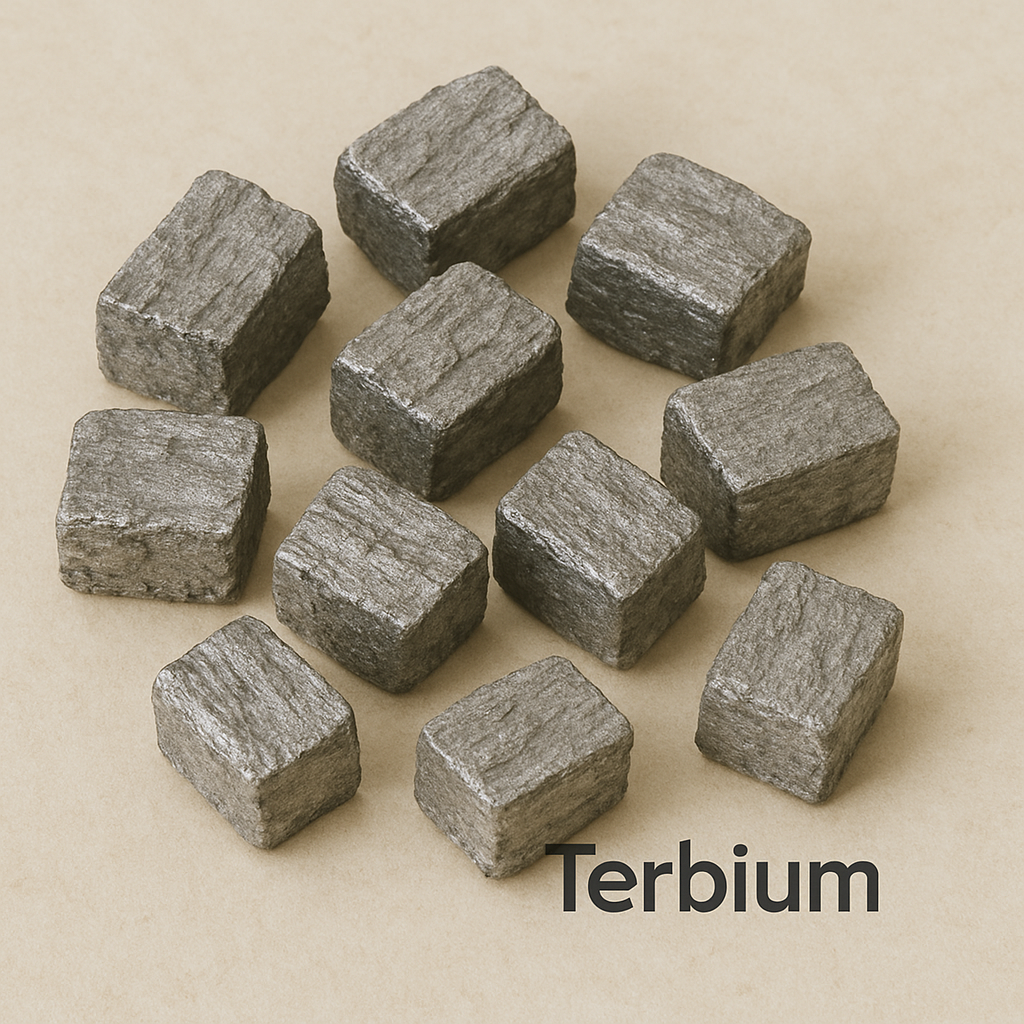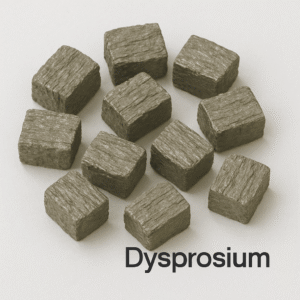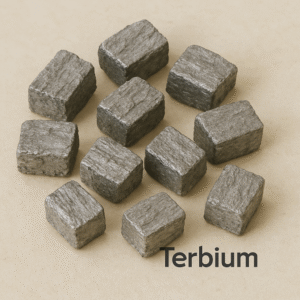Your cart is currently empty!
Terbium (Tb)
Basic Information Element Name: Terbium Symbol: Tb Atomic Number: 65 Atomic Weight: 158.93 Element Category: Lanthanide (Rare Earth Element) Standard State: Solid Appearance: Silvery-gray, soft, ductile metal Chemical and Physical Properties Density: 8.23 g/cm³ Melting Point: 1,356 °C (2,473 °F) Boiling Point: 3,123 °C (5,653 °F) Electronegativity (Pauling scale): 1.20 Common Oxidation States: +3 (dominant), +4 (in some oxides) […]
Description
Basic Information
-
Element Name: Terbium
-
Symbol: Tb
-
Atomic Number: 65
-
Atomic Weight: 158.93
-
Element Category: Lanthanide (Rare Earth Element)
-
Standard State: Solid
-
Appearance: Silvery-gray, soft, ductile metal
Chemical and Physical Properties
-
Density: 8.23 g/cm³
-
Melting Point: 1,356 °C (2,473 °F)
-
Boiling Point: 3,123 °C (5,653 °F)
-
Electronegativity (Pauling scale): 1.20
-
Common Oxidation States: +3 (dominant), +4 (in some oxides)
-
Magnetism: Paramagnetic
Reactivity and Storage
Terbium is moderately reactive. It tarnishes slowly in air, forms an oxide layer, and reacts with water and dilute acids. Like many lanthanides, it must be stored under inert gas or mineral oil to avoid oxidation. It is less reactive than europium or samarium but more reactive than gadolinium.
Occurrence and Extraction
Terbium is not found free in nature but occurs in monazite, xenotime, and bastnäsite alongside other rare earth elements. It is extracted through solvent extraction and ion exchange processes during rare earth separation.
Isotopes
-
Natural terbium consists of one stable isotope: Tb-159
-
Several artificial isotopes (e.g., Tb
Key Applications
1. Green Phosphors (Color Display Technology)
-
Terbium oxide (Tb₄O₇) is a key green phosphor component in:
-
Fluorescent lamps
-
CRT and LCD displays
-
Energy-efficient lighting
-
-
Produces bright, stable green fluorescence when excited by electrons or UV radiation
2. Solid-State Devices & Lasers
-
Terbium-doped materials are used in solid-state lasers and optical isolators
-
Plays a critical role in devices requiring Faraday rotation (magneto-optic effects)
3. Alloys in Magnetostrictive Materials
-
Combined with iron and dysprosium in Terfenol-D, a material with extreme magnetostriction
-
Used in sonar systems, precision actuators, vibration dampers, and sensors
-
Critical in military and industrial applications due to high sensitivity
-
4. Fuel Cells & Electronics
-
Terbium is investigated for use in solid oxide fuel cells (SOFCs) due to its ionic conductivity when doped in ceramics
-
Terbium-doped materials are also used in capacitors and dielectric ceramics
5. Data Storage and Optical Media
-
In magneto-optical storage media (alongside dysprosium and gadolinium)
-
Enables high-density data recording with thermal stability
-
Strategic Relevance
-
Terbium is considered a critical material due to limited availability and high-value applications in green energy, defense, and telecommunications
-
Global supply is limited, with most production concentrated in China
-
Recycling and substitution strategies are actively being developed
Interesting Facts
-
Discovered in 1843 by Swedish chemist Carl Gustaf Mosander
-
Named after the Swedish village Ytterby, like several other rare earth elements
-
Despite being relatively rare, it plays a central role in modern display and energy technology
-
Terbium-based green phosphor is one of the brightest and most stable available
Additional information
| Weight | 1 lbs |
|---|---|
| Dimensions | 1 × 1 × 1 in |
| Weight | 100G |
-
Cerium (Ce)
$257.00 -
Dysprosium (Dy)
$670.00 -
Erbium (Er)
$174.00 -
Europium (Eu)
$1,550.00 -
Gadolinium (Gd)
$106.00






